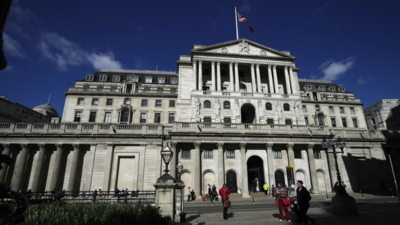Monetary policy: Bank of England trims rate to 4%; signals cautious easing ahead

The Bank of England on Thursday trimmed its key interest rate by 25 basis points to 4 per cent, marking the fifth reduction since August 2024, as it seeks to support Britain’s slowing economy amid concerns over rising US tariffs and domestic tax hikes.The latest cut brings borrowing costs to their lowest level since March 2023, with Governor Andrew Bailey cautioning, “Interest rates are still on a downward path, but any future rate cuts will need to be made gradually and carefully.” The move came despite inflation rising to an 18-month high of 3.6 per cent in June, well above the BoE’s 2 per cent target, driven by persistent fuel and food prices.As per news agency AFP, the BoE now expects inflation to peak at 4 per cent next month, before easing back to target by the second quarter of 2027. The central bank also raised its growth forecast slightly, expecting the UK economy to expand by 1.25 per cent this year, up from the earlier 1 per cent estimate.While the direct impact of US tariffs is “milder than feared,” the central bank noted that broader uncertainty linked to tariff policies continues to dampen business sentiment. In May, the UK and the US agreed to lower tariffs, previously set above 10 per cent, on select British exports, including cars. However, baseline tariffs of 10 per cent on most UK goods introduced by US President Donald Trump in April remain in place.The BoE’s Monetary Policy Committee faced an unprecedented situation during its deliberations. Initially split in a three-way vote, four members backed the cut, four favoured no change, and one called for a deeper 0.5 per cent cut, the decision passed only after a second round of voting, a first since the bank gained independence in 1997.The UK economy contracted for a second consecutive month in May, and unemployment has climbed to 4.7 per cent, its highest since 2021. As per AFP, analysts, including those at the National Institute of Economic and Social Research, believe the Labour government’s decision to raise business taxes in April has also weighed heavily on business activity.“There are slightly more risks on the downside to activity,” said Bailey after the rate cut, as per AFP. “Economic growth is subdued, the labour market continues to loosen and consumption growth may take longer to pick up.”Treasury chief Rachel Reeves welcomed the BoE’s move, saying it would help reduce costs for “mortgages and loans for families and businesses.” She added that the government remained focused on boosting long-term growth through infrastructure investment and trade partnerships.Expectations that rates will remain steady at 4 per cent for longer have lent support to the pound, even as some traders remain cautious ahead of the Autumn Budget.





